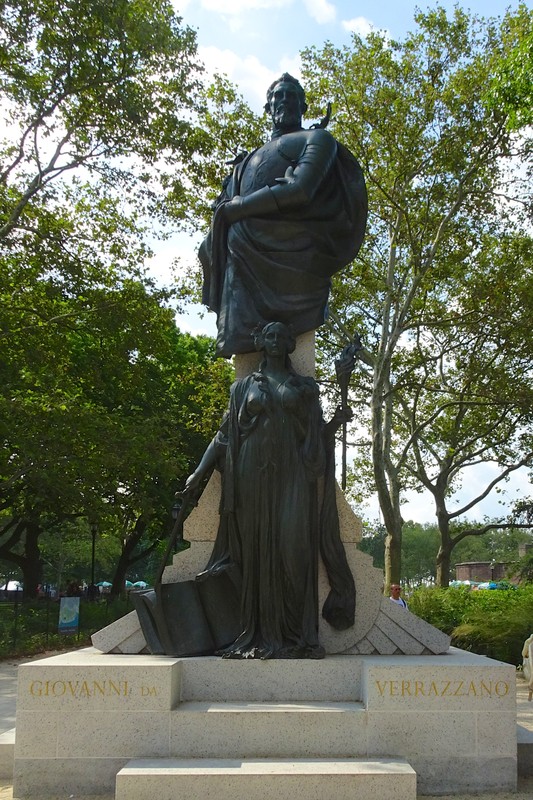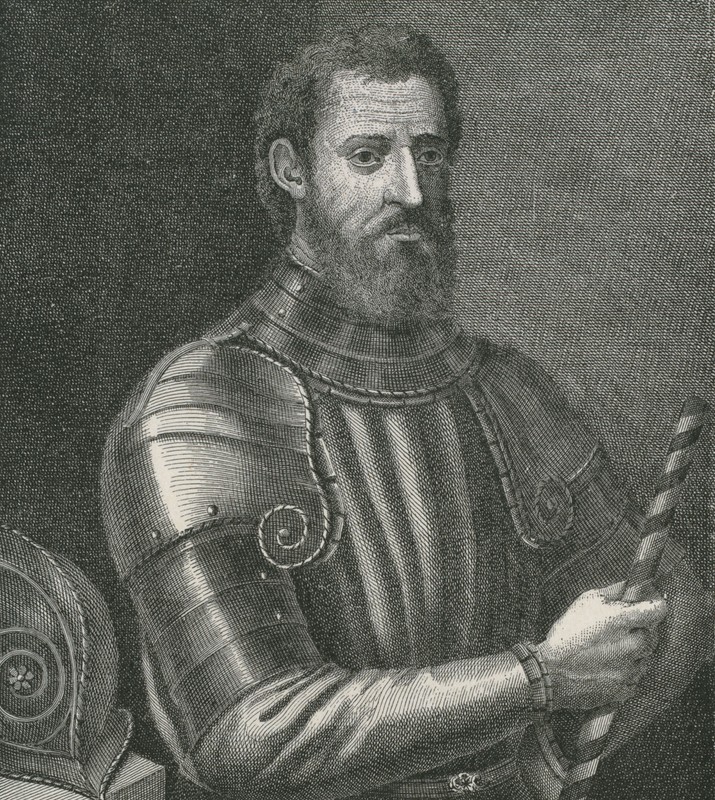Giovanni da Verrazzano Monument
Introduction
Text-to-speech Audio
Images
Giovanni da Verrazzano Monument

Giovanni da Verrazzano (c.1485-1528)

Backstory and Context
Text-to-speech Audio
Giovanni da Verrazzano was born to a wealthy family in the town of Greve (present-day Greve in Chianti) in what is now the Tuscany region of Italy in 1485. During his early years, he received a fine education in nearby Florence. When he was in his early twenties, Verrazzano left his native land and moved to the French coastal town of Dieppe to commence a maritime career. Once his training was complete, he piloted French merchant vessels in the Mediterranean, completing several trips to the Levant.
In 1523, with the approval of French king Francis I, Verrazzano organized a voyage to the New World in search of a westward sea passage to Asia. In January of the following year, he set sail from France on La Dauphine. Over the course of the journey, Verrazzano explored the east coast of North America, discovering New York Harbor, Block Island, and Narragansett Bay. After reaching Newfoundland, he returned to France without having discovered a westward sea passage to Asia. Upon his return from the New World, Verrazzano wrote a letter to Francis I chronicling his journey. Information contained within the letter would prove valuable to subsequent explorers such as Henry Hudson.
Verrazzano would undertake two additional trans-Atlantic expeditions for France. A few years after his first journey, he embarked on a second voyage to the New World in 1527. When he returned to France, Verrazzano brought with him valuable dyewood from Brazil. The following year, Verrazzano undertook what would ultimately be his final voyage to the New World. During the excursion, he explored present-day Florida, the Bahamas, and the Lesser Antilles. After Verrazzano and several crew members set foot on the Caribbean island of Guadeloupe, the Carib people captured, killed, and ate them. Some scholars, however, dispute this version of Verrazzano’s demise. They claim that Verrazzano was also a successful French pirate named Jean Fleury, who was captured, tried, and executed by the Spanish.
While New York civic leaders were preparing for the Hudson-Fulton Celebration of 1909, Carlo Barsotti, an Italian immigrant and editor of the influential Italian-language newspaper Il Progresso, rallied financial support from the city’s Italian immigrant community for the erection of a monument in honor of Verrazzano. Designed by sculptor Ettore Ximenes, the monument consists of a larger-than-life-sized bronze bust of the sixteenth-century Italian explorer and a bronze female allegorical figure representing discovery holding a torch in one hand and a sword in the other. Both are situated on an elaborate pedestal made of Deer Isle granite. Located in The Battery at the southern tip of Manhattan, the monument was dedicated on October 6, 1909.
Since its dedication more than one hundred years ago, the monument has been relocated a few times. In the early 1940s, it was moved to storage to make way for the construction of the Brooklyn-Battery Tunnel. Roughly a decade later, in 1952, the monument was reinstalled near its original location. Beginning in the 1990s and continuing into the 2010s, The Battery underwent an extensive renovation. During that time, many of the park’s monuments, including the one under examination, were placed in storage before being reinstalled later.
Cite This Entry
Curran, Francis. "Giovanni da Verrazzano Monument." Clio: Your Guide to History. December 4, 2020. Accessed April 1, 2025. https://theclio.com/tour/1872/18
Sources
"Giovanni da Verrazzano." Encyclopaedia Britannica. Web. 3 December 2020 <https://www.britannica.com/biography/Giovanni-da-Verrazzano>.
"Giovanni da Verrazzano." New York City Department of Parks and Recreation. The City of New York. Web. 3 December 2020 <https://www.nycgovparks.org/parks/battery-park/monuments/1628>.
"Giovanni da Verrazzano." The Ages of Exploration. The Mariners' Museum and Park. Web. 3 December 2020 <https://exploration.marinersmuseum.org/subject/giovanni-da-verrazzano/>.
McCoy, Roger M. On the Edge: Mapping North America's Coasts. New York: Oxford University Press, 2012.
"Verrazzano Monument." Italian Historical Society of America. Web. 3 December 2020 <http://www.italianhistorical.org/monument.html>.
https://commons.wikimedia.org/wiki/File:Giovanni_da_Verrazzano_by_Ximenes,_Battery_Park,_NYC.jpg
https://www.britannica.com/biography/Giovanni-da-Verrazzano

